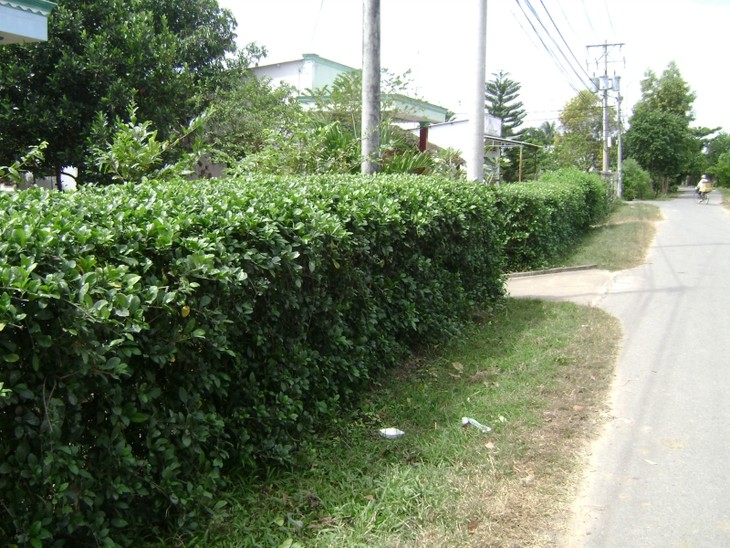(VOVworld) – The pilot communes for the new rural development program in Ho Chi Minh city have obtained visible changes after 3 years. Successful production models have been expanded; people’s incomes have increased; and the infrastructure has been upgraded.

Streets in Tan Thong Hoi commune are paved and kept clean (photo: ccptnt.com) |
Ho Chi Minh city and the National Steering Committee on developing new rural areas selected 6 communes to pilot the program in 2010.
Ly Nhon commune is an isolated area 70 km from the center of Can Gio district. The commune decided to firstly invest in infrastructure including building roads. The 20km inter-commune road, 4 inter-hamlet roads, and irrigation system were upgraded. About 980 households donated 250,000 square meter of land worth 940,000 USD to expand roads. 7,000 households in the commune donated land to build roads, schools, and clinics. The work has created momentum for the commune’s socio-economic development. For example, the upgraded Goc Tre road has increased shrimp production over an area of 1,000 hectares.
Nguyen Van Son, Chairman of Can Gio district, said: “We implemented the new rural development program in two phrases. In the first phrase up to 2015, all communes will complete the city’s criteria for new rural areas. From 2015 to 2020, we’ll improve the quality of the new rural program and develop the economy and society. Can Gio district will begin to become a national eco-tourist hub.”
Communes on the outskirts of Ho Chi Minh city have more advantages in developing new rural areas. Before implementing the new programs, Xuan Thoi Thuong commune, Hoc Mon district had a rather good irrigation system, a standardized clinic, a post-office and electricity connection for all households. The commune has an agricultural and service cooperative and successful household production models. These are the results of previous programs on rural electrification, building roads, and canals, and adopting new varieties of plants and animals.
Bui Ngoc Quy, Chairman of Tan Thoi Thuong Commune People’s Committee, said improving knowledge and vocational training for farmers were fundamental to improving the countryside. “We have organized free vocational training classes in the communes to attract more local farmers. We have assigned local organizations to make direct contact with the people in order to offer appropriate vocational training and generate jobs for them.”
In 3 years of implementing the program, about 240 traffic works and 100 irrigation facilities were made and 430 dilapidated houses were rebuilt with total capital of 100 million USD, one third of which was contributed by the people.
Tan Thong Hoi and Thai My communes have already fulfilled 19 new rural criteria. 4 other communes have obtained 17 of the 19 criteria. In the new communes, rice field acreage has narrowed to provide land for high-profit subsidiary crops. The planting of orchids and bonsai trees, raising dairy cows, and handicraft production have been expanded. Farmers are happy to earn the extra income. Nguyen Tan Tuyen, Deputy Head of the Economics and Budget Department of the Ho Chi Minh city People’s Council, said: “The national target program for building new rural areas has been supported by the people. The success of the program required the involvement of all sectors, the community’s supervisory role, and staff training.”
The success of the 6 pilot communes is the foundation for Ho Chi Minh city to replicate new models in other 50 communes to achieve 19 new rural criteria by 2015.